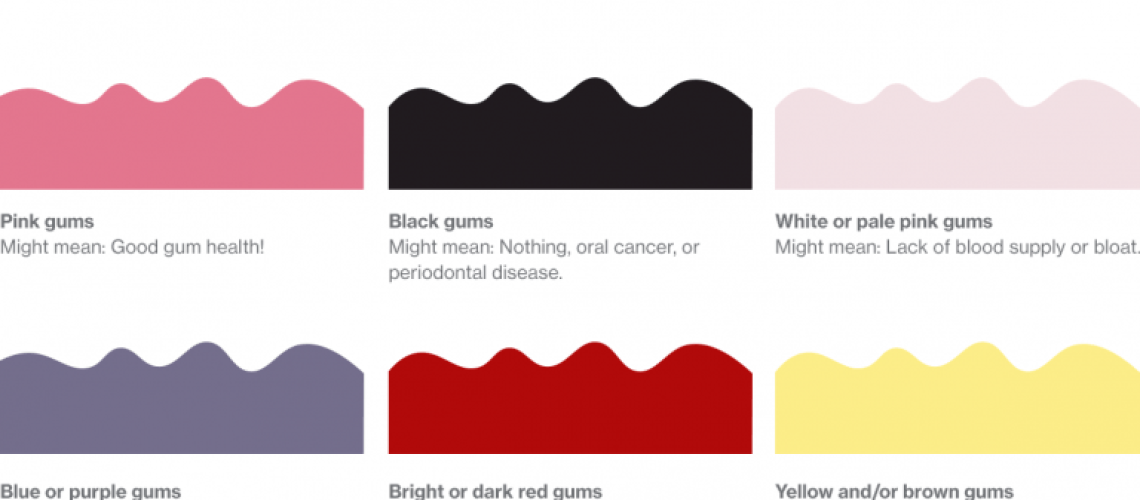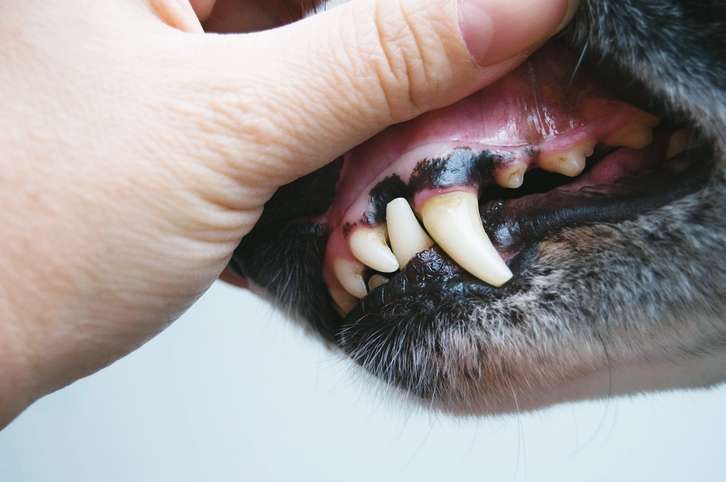Key Takeaways:
- The color of your dog's gums can indicate their overall health.
- Pale or white gums may be a sign of anemia or shock and require immediate veterinary attention.
- Bright red gums can indicate heat stroke or high blood pressure.
- Blue or purple gums may suggest lack of oxygen and could be a sign of respiratory distress.
- Healthy gum color for dogs is typically pink, but it can vary depending on breed and individual characteristics.
Have you ever noticed the color of your dog's gums? You might not think much of it, but did you know that the color of your dog's gums can actually tell you a lot about their health? Understanding what the color of your dog's gums mean is essential for every pet owner. By delving into this subject, you will gain valuable insights into your furry friend's well-being and be able to identify potential health issues early on. So, let's dive in and discover why the color of your dog's gums is more than just a cosmetic detail. Get ready to unlock the secret language hidden in their gums!
Understanding Your Dog's Gums: What the Color Tells About Their Health
The Basics of Gum Color in Dogs
When it comes to your dog's health, their gums can provide valuable clues. Just like humans, dogs have gums that cover the bones of their jaw. The color of their gums can indicate whether they are healthy or if there may be an underlying issue.
Normal gum color in dogs is typically pink, similar to the color of our own gums. However, it's important to note that gum color can vary slightly depending on the breed and individual dog. By understanding what is normal for your specific dog, you can better identify any changes that may signal a health problem.
Why Gum Color Matters
Checking your dog's gums regularly is an essential part of monitoring their overall health. Changes in gum color can be an early sign of various health issues, allowing you to take prompt action and seek veterinary care if necessary.
Gum color provides insights into your dog's circulation and oxygen levels. If the gums appear pale or white, it could indicate reduced blood flow or anemia. On the other hand, blue or purple gums may suggest a lack of oxygenation.
By paying attention to your dog's gum color, you can catch potential problems early on and ensure they receive timely medical attention if needed.
The Importance of Checking Your Dog's Gums: Why It Matters
Promoting Early Detection
Your furry friend relies on you to monitor their health and well-being. Regularly checking your dog's gums allows you to detect any abnormalities early on before they become more serious issues.
Dogs often hide signs of illness or discomfort until they are quite advanced, making it crucial for you to be proactive in identifying potential problems. By regularly checking your dog's gums, you can catch any changes in color or texture that may indicate an underlying health condition.
Indicating Overall Health
The condition of your dog's gums can provide valuable insights into their overall health. Healthy gums should be moist, pink, and free from swelling or bleeding. If you notice any changes such as redness, inflammation, or sores, it could be a sign of infection or dental issues.
In addition to gum color, other factors like bad breath and excessive drooling can also indicate potential health problems. By checking your dog's gums regularly along with these other signs, you can get a better understanding of their overall well-being.
Checking Your Dog's Gums for Health: Simple Ways to Assess Their Condition
The Gum Color Test
To assess the health of your dog's gums, gently lift their lip and take a look at the color. Normal gum color is usually pink, but variations within that range are also considered healthy.
If the gums appear pale or white instead of pink, it could indicate anemia or reduced blood flow. Blue or purple gums may suggest a lack of oxygenation. It's important to note any changes in gum color and consult your veterinarian if necessary.
Moisture and Texture
In addition to color, the moisture and texture of your dog's gums are also important indicators of their health. Healthy gums should feel slightly moist when touched and have a smooth texture.
Dry or sticky gums may suggest dehydration or other underlying issues. Similarly, rough or bumpy textures could be a sign of oral infections or dental problems. Regularly feeling your dog's gums can help you identify any changes in moisture or texture that may require further investigation.
Capillary Refill Time
Another simple way to assess your dog's gum health is by checking their capillary refill time. Gently press your finger against the gums and then release it. The area you pressed should turn white momentarily and then return to its original color within 1-2 seconds.
If the color takes longer to return or remains pale, it could indicate poor circulation or other health issues. This test can provide additional insights into your dog's overall well-being.
Pale or White Gums in Dogs: What It Could Mean for Their Well-being
Possible Causes of Pale Gums
If you notice that your dog's gums appear pale or white, it may be a cause for concern. Pale gums can be an indication of various underlying health conditions:
- Anemia: A decrease in red blood cells can lead to paleness in the gums.
- Blood loss: If your dog has experienced significant blood loss, their gums may become pale due to reduced blood flow.
- Shock: In cases of severe trauma or medical emergencies, such as heatstroke, shock can cause pale gums.
- Infection: Certain infections can affect blood circulation and result in paleness of the gums.
Seeking Veterinary Care
If your dog has pale or white gums, it's important to consult with a veterinarian for proper diagnosis and treatment. They will be able to determine the underlying cause and recommend appropriate steps to address the issue.
In some cases, pale gums may require immediate medical attention. If your dog is also showing signs of weakness, lethargy, difficulty breathing, or other concerning symptoms, contact your veterinarian right away.
Common Health Conditions that Affect the Color of Your Dog's Gums
Anemia
Anemia is a condition characterized by a decrease in red blood cells or hemoglobin levels. It can lead to pale gums in dogs. Anemia can be caused by various factors, including:
- Blood loss from injury or internal bleeding
- Parasitic infections such as fleas or ticks
- Dietary deficiencies
- Autoimmune diseases
Gum Inflammation and Infection
Inflammation and infection in the gums, known as gingivitis and periodontal disease, can also affect gum color. These conditions are commonly caused by a buildup of plaque and tartar on the teeth, leading to bacterial growth and irritation of the gums.
If left untreated, gum inflammation and infection can progress to more serious dental problems, causing pain and discomfort for your dog. Regular dental care, including brushing their teeth and professional cleanings, can help prevent these issues.
Decoding Blue or Purple Gums in Dogs: What You Should Know
Possible Causes of Blue or Purple Gums
If your dog's gums appear blue or purple instead of their normal pink color, it could indicate a lack of oxygenation. This condition is called cyanosis and may be caused by:
- Poor circulation: Reduced blood flow to the gums can result in bluish discoloration.
- Lung problems: Respiratory issues that affect oxygen exchange between the lungs and bloodstream can cause cyanosis.
- Heart conditions: Certain heart diseases can lead to inadequate oxygen supply to the tissues, including the gums.
- Cold temperature: Exposure to extreme cold can cause temporary discoloration of the gums.
Seeking Veterinary Assistance
If your dog has blue or purple gums, it is important to seek immediate veterinary attention. Cyanosis is a serious condition that requires prompt diagnosis and treatment.
Your veterinarian will conduct a thorough examination to determine the underlying cause of the gum discoloration. They may perform additional tests, such as blood work or imaging, to aid in their diagnosis. Treatment will depend on the specific condition identified and may include medications or interventions to improve oxygenation and circulation.
In conclusion, the color of your dog's gums can provide important clues about their health. Pink gums usually indicate a healthy dog, while pale or blue gums may suggest potential health issues that require attention from a veterinarian.
What does unhealthy dog gums look like?
If a dog's gums are blue, it is a sign that they need to see a veterinarian right away. Pale pink or white gums indicate a serious problem such as acute blood loss or anemia. Bright cherry red gums can be a sign of overheating, carbon monoxide poisoning, high blood pressure, or exposure to toxins.
What color are unhealthy gums?
Unhealthy gums can exhibit various colors depending on the underlying issue. Inflammation caused by disease-causing bacteria can result in bright red gums, while infection from these bacteria can cause gums to appear white or blue. In more severe cases, the infection can cause the gums to turn black.
What color are dogs gums when dehydrated?
The shade of a dog's gums and tongue can indicate if they are dehydrated. Pale gums and tongue may suggest that the dog needs water, while pink color indicates that the dog is hydrated. However, if the gums and tongue appear dark red-pink, it could also be a sign of dehydration.
What color are parvo gums?
Dogs infected with parvo can rapidly become dehydrated and weak. You may observe that your dog's gums appear darker or paler than usual. In more severe instances, dogs may exhibit a weak pulse, an accelerated heart rate, and signs of hypothermia with low body temperature.
What do dehydrated gums look like dogs?
Examine the gums of the dog. The color of a healthy dog's gums should be pinkish-red, smooth, and moist. If the gums appear different, it could indicate shock or dehydration. Gums that are deep red and sticky suggest dehydration and, in hot conditions, may be an early sign of heat exhaustion.
When should I be concerned about my dogs gum color?
When should you reach out to your veterinarian? It is important to contact your veterinarian immediately if your dog's gums are not a healthy salmon pink color, as this may indicate a health issue. If possible, take a clear and well-lit photograph to send to your vet while discussing the situation with them.

















